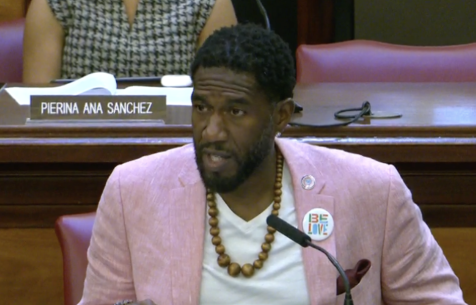
BY KIRSTEN DAVIS
After Harlem became the hub of an outbreak of Legionnaires’ disease this summer, the New York City Council heard testimony on ways to prevent the disease at a hearing on September 19. During the hearing, council members and other city officials discussed the outbreak and the preventative measures being taken to contain it since it was first discovered in late July 2025.
According to the Center for Disease Control, Legionnaires’ disease is a type of pneumonia caused by Legionella bacteria. Legionnaires’ disease is not spread from person to person but is instead contracted through directly breathing in Legionella bacteria from contaminated mist. It can be deadly with complications and currently the death toll in Harlem is now at seven.
The New York City Health Department attributes the recent outbreak to contaminated cooling systems in buildings in Harlem after a cluster investigation on the disease was completed in August. In 2015, after a Legionnaires’ outbreak in the Bronx, a law was passed, local law 77, which requires all cooling towers in the city to be registered and inspected, tested, cleaned, and disinfected in accordance with the law. Attendees of the hearing, including New York City Public Advocate Jumaane Williams and Health Department Commissioner Dr. Michelle Morse, point to structural racism, which is racism deeply rooted in systems, laws, and policies, as a major factor in why certain communities are being impacted. Minority populated neighborhoods have a higher risk of the disease especially due to these neighborhoods lacking in resources and workers to keep cooling towers clean and safe water systems.
“It demands not just our attention, but our action. For far too long, outbreaks of these preventable illnesses have highlighted the inequities that exist in public health and in the maintenance of our city’s infrastructure,” Council member Yusef Salaam said. “The families in Harlem deserve the assurance that the water that they drink, the air that they breathe while they are near these cooling towers this time near their homes, and the buildings that they live in are in fact safe.” As a representative of District 9 and one of the wrongfully convicted Central Park Five, Salaam is a strong advocate for those underprivileged people of Harlem. It is that struggle that they face that causes him to continue to push for accountability and transparency to prevent such outbreaks.
“I’d be remiss if I didn’t add my voice to the frustrations that anytime these things seem to be happening, it happens in particular communities, black and brown. It has happened in Harlem multiple times, the Bronx, which means we should expect that it may happen and be proactive in trying to prevent it and not reactive when it occurs. Hopefully we can figure out why it happened here and prevent it from happening again in honor of the people that we lost and the people that are concerned,” said Williams. He has been concerned about Legionnaires’ and has even held a town hall in August 2025 to demand action and ensure the public is aware of the issue. The town hall was held at Mt. Zion AME Church and hosted Harlem residents as well as assembly members and council members to address the outbreak. The town hall provided residents with information on how the disease is spread as well as affected zip codes in which they should remain vigilant. It also touched on how racial disparity makes the disease more common in minorities despite a lack of discrimination from the disease itself. Through his advocacy, Williams pushes to hold those in charge accountable and invest more in public health.
Dr. Morse, the acting health commissioner and chief medical officer of the New York City Department of Health and Mental Hygiene, assured council members that the department sprung into immediate action to prevent and respond to the outbreak. The department had three solutions for immediate response to the spread of the disease. First, owners of buildings with cooling towers were to comply with health department regulations and local law 77. Second, the health department would conduct inspections of registered cooling towers to promote compliance with the law and aid owners in complying. The third solution is an infectious disease surveillance system which provides data 24 hours a day to try and catch infectious diseases before they become a major threat. When they first heard word of it over the summer, New Yorkers were urged to report it immediately if they experienced flu-like symptoms.
“These neighborhoods have experienced consistent long-term generational disinvestment due to structural racism. As a result, we see higher rates of chronic disease and differences in the built environment, which puts residents of these neighborhoods at an unfairly greater risk of Legionnaires’ disease,” Morse said. “We look forward to working with council to continue to protect the health of New Yorkers in every zip code.”
The health department provided transparency to New Yorkers by keeping all records of the disease cluster investigation public. Residents were able to stay updated from July 25th, 2025, the beginning of the investigation, to August 29th, 2025, the end of the investigation. Each step of the investigation is available on the NYC Health Department’s website. By working to provide transparency to New Yorkers and investing in public health, especially in poverty-stricken areas affected by structural racism, Morse believes it is possible that outbreaks like this can be prevented, and residents will remain healthy.
